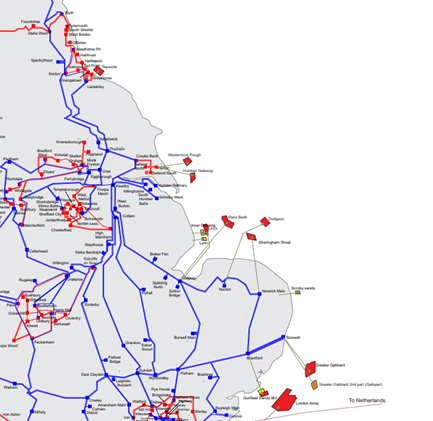HVDC Centre has performed a wide interaction study in the coast of Yorkshire, where many power electronic resources (both existing and planned) are expected to arise in the area; these include a range of offshore, potentially coordinated HVDC connections and at least one of the east coast interconnections at Drax 400kV substation. As Great Britain (GB) transitions to net zero, existing conventional generation resources lending this area network stability may operate with lower availability presenting a greater potential of interaction within a more convertor dominated area of the network.
This study, therefore, seeks to inform:
- The impact of different technology options for offshore wind farm connection might be upon potential network interaction risks, and
- what the nature of the types of interactions across projects in this area of the network might be.

Figure 1: An approximation of the potential study area under consideration
In line with techniques for network reduction which are under discussion within the CIGRE B4.81 technical workbook, The National HVDC Centre (the Centre) will work with the onshore Transmission Owner (TO) and the Electricity System Operator (ESO) to identify a scope of network to be taken forward for simulation and the range of operating states of this area of the network to be considered within the work.
The Centre’s analysis will make use of “cutting edge” approaches from its previous research work, and de-risking projects.
An overview of the project stages to be undertaken by the Centre is as follows:
- Network reduction modelling.
- Network build modelling.
- Frequency dependent screening techniques.
- Other screening techniques.
- Dynamic simulation and
- Report on Results, Key Findings and Considerations.

